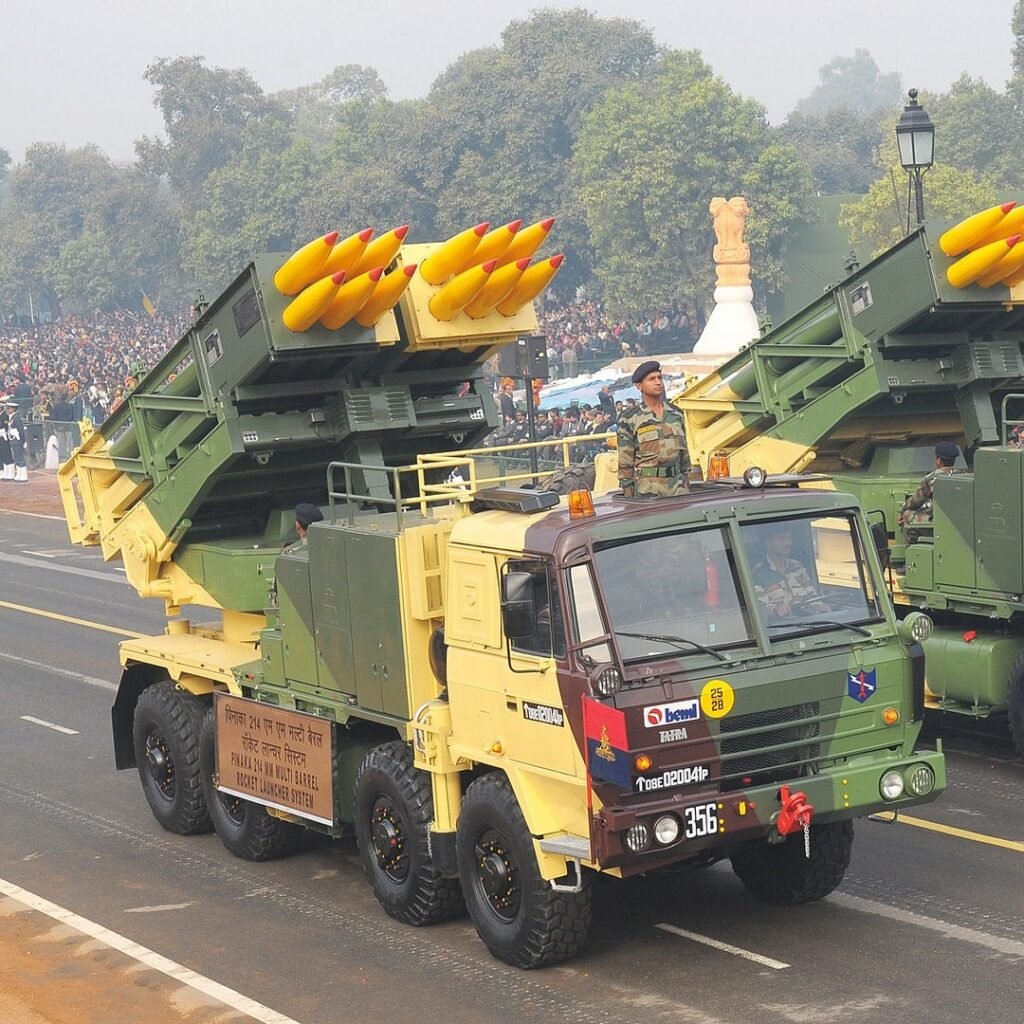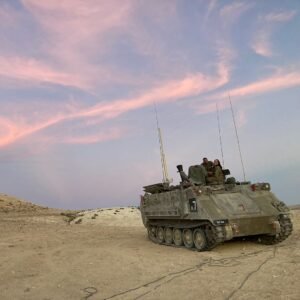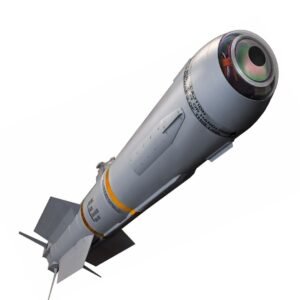Introduction
The Pinaka Multi Barrel Rocket Launcher is a powerful weapon system that has been developed by India’s Defense Research and Development Organization (DRDO) to meet modern-day warfare requirements. With its high mobility, accuracy, and firepower, the Pinaka MBRL has become an essential asset for the Indian Army in several military operations.

Design and Development
The design and development of the Pinaka Multi Barrel Rocket Launcher (MBRL) system started in the early 1980s as a joint project between the DRDO and the Indian Army. The initial concept was to create a weapon system that could fire multiple rockets in a short period with high accuracy.
The development of the Pinaka MBRL system underwent several stages, including design, development, and testing. The first prototypes of the system were tested in the late 1990s, and the system underwent several trials before it was approved for mass production.
The Pinaka MBRL system’s design includes six launcher vehicles, each equipped with 12 tubes capable of firing a range of rockets. The system’s firing mechanism allows for a salvo of 72 rockets to be fired in just 44 seconds, providing a decisive advantage on the battlefield. The system is highly mobile and can be deployed in various terrains, making it ideal for quick strikes.
The Pinaka Multi Barrel Rocket Launcher system underwent several upgrades, including the development of the Pinaka Mk-II and Mk-III versions, which have increased range and accuracy. The Pinaka Mk-II version has an increased range of up to 90 km, while the Pinaka Mk-III version has an improved guidance system, making it more accurate and lethal.
Pinaka Multi Barrel Rocket Launcher:-General Specification
| Specification | Details |
| Country of Origin | India |
| Designer | Defence Research and Development Organisation (DRDO) |
| Manufacturer | Tata Power SED |
| Type | Multi Barrel Rocket Launcher (MBRL) System |
| Number of Launchers | 6 |
| Number of Tubes per Launcher | 12 |
| Total Number of Tubes | 72 |
| Rockets | Unguided and Guided Rockets |
| Maximum Range | 75 km (Pinaka Mk-I), 90 km (Pinaka Mk-II), 120 km (Pinaka Mk-III) |
| Mobility | Mounted on Tatra or Tata Trucks |
| Firing Mechanism | Electric Servo System |
| Firing Time for a Salvo of 72 Rockets | 44 seconds |
| Warhead Types | High Explosive, Fragmentation, and Incendiary |
| Guidance System | Improved guidance system in Pinaka Mk-III version |
| Operational Capability | All weather, day and night |
| Crew | 3 (Commander, Driver, and Operator) |
| Weight | 12,000 kg |
| Length | 12.8 m |
| Width | 2.4 m |
| Height | 3.4 m |
Capabilities and Features of Pinaka Multi Barrel Rocket Launcher
The Pinaka Multi Barrel Rocket Launcher (MBRL) system is providing several unique features and capabilities.
- High Firepower: The Pinaka MBRL system can fire a salvo of 72 rockets in just 44 seconds, providing a decisive advantage on the battlefield. The system’s 12 tubes on each launcher vehicle can fire a range of rockets, including guided and unguided rockets.
- Increased Range: The Pinaka MBRL system has undergone several upgrades, including the development of the Pinaka Mk-II and Mk-III versions, which have increased range. The Pinaka Mk-II version has a range of up to 90 km, while the Pinaka Mk-III version has a range of up to 120 km.
- Improved Accuracy: The Pinaka Multi Barrel Rocket Launcher system’s accuracy has been significantly improved with the development of the Pinaka Mk-III version, which has an improved guidance system. The system’s accuracy makes it a preferred weapon system for modern-day warfare.

- High Mobility: The Pinaka MBRL system is highly mobile and can be deployed in various terrains, making it ideal for quick strikes. The system can be mounted on a variety of vehicles, including Tatra and Tata trucks, providing the Indian Army with a flexible and agile weapon system.
- Modular Design: The Pinaka MBRL system’s modular design allows for easy maintenance and upgrades, ensuring that the system remains effective and relevant on the battlefield.
- Versatile Rockets: The Pinaka MBRL system can fire a range of rockets, including high explosive, fragmentation, and incendiary rockets. The system’s versatility allows the Indian Army to customize the weapon system to meet specific mission requirements.
Pinaka Multi Barrel Rocket Launcher:- Variants
The Pinaka Multi Barrel Rocket Launcher (MBRL) system has several variants with different specifications and capabilities.
Pinaka Mark-I – the first variant of the system with a range of 40 km and a payload of 100-250 kg. It has 12 barrels and can fire a salvo of 12 rockets in 44 seconds.
Pinaka Mark-II – an upgraded version with a range of 70-80 km and a payload of 250 kg. It has a more advanced guidance system and can fire both guided and unguided rockets. It also has 12 barrels and can fire a salvo of 12 rockets in 40 seconds.
Pinaka Mark-III – the latest and most advanced variant with a range of 90-120 km and a payload of 300 kg. It has a sophisticated navigation system and can fire both guided and unguided rockets. Like the previous variants, it has 12 barrels and can fire a salvo of 12 rockets in 45 seconds.
Pinaka Guided Rocket – a guided version of the system developed in collaboration with Israel. It has a range of up to 40 km and a payload of 70 kg. It uses an advanced guidance system and is capable of hitting targets with high precision.

The Pinaka Multi Barrel Rocket Launcher:- War History
The Pinaka Multi Barrel Rocket Launcher (MBRL) system has seen action in several conflicts and has been a critical component of the Indian Army’s arsenal for many years.
Operation Parakram (2001-2002):
The Pinaka Multi Barrel Rocket Launcher system saw its first operational deployment during Operation Parakram, following the 2001 terrorist attack on the Indian Parliament. The system was deployed along the India-Pakistan border and was used to deter any possible aggression from Pakistan.
Operation Vijay (2003):
The Pinaka Multi Barrel Rocket Launcher system played a significant role in the Indian Army’s victory during the Kargil conflict. The system was used to provide accurate and timely artillery support to Indian troops, leading to the recapture of several strategic positions.
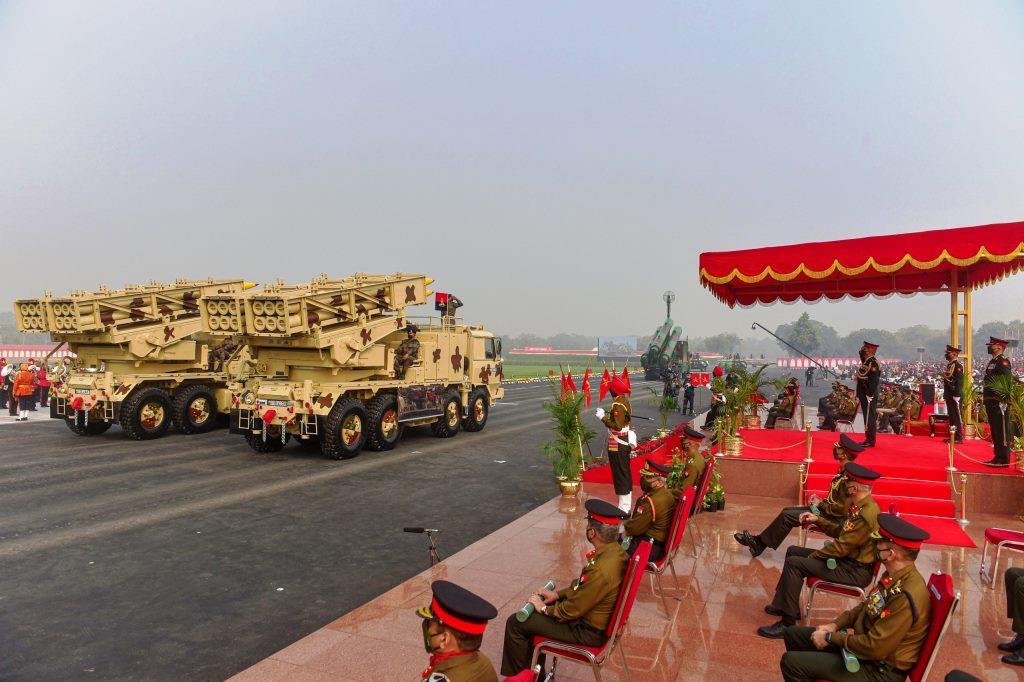
Operation Orchid (2009):
The Pinaka MBRL system was deployed during Operation Orchid, which aimed to flush out militants from the North-Eastern region of India. The system was used to provide effective fire support to Indian troops, leading to the successful completion of the operation.
Operation Meghdoot (2014):
The Pinaka MBRL system was deployed along the India-Pakistan border during Operation Meghdoot, which aimed to curb infiltration by terrorists. The system’s quick response time and high mobility proved to be effective in deterring any possible infiltration attempts.
Difference Between Pinaka vs Himars
Pinaka Multi Barrel Rocket Launcher (MBRL) and High Mobility Artillery Rocket System (HIMARS) are both highly advanced and powerful rocket artillery systems.
- Range: HIMARS has a longer range than the Pinaka MBRL. HIMARS has a range of up to 300 km, while the range of the Pinaka varies between 75 km (Pinaka Mk-I), 90 km (Pinaka Mk-II), and 120 km (Pinaka Mk-III).
- Mobility: HIMARS has better mobility than the Pinaka MBRL. HIMARS is mounted on a highly mobile and versatile High Mobility Multipurpose Wheeled Vehicle (HMMWV), while the Pinaka MBRL is mounted on a Tatra or Tata truck.
- Firing Rate: The Pinaka MBRL has a higher firing rate than HIMARS. The Pinaka can fire 12 rockets in just 44 seconds, while HIMARS can fire only six rockets in just over a minute.
- Payload: HIMARS can carry a wider range of payloads than the Pinaka MBRL. HIMARS can carry a variety of rockets, including GPS-guided and laser-guided rockets, while the Pinaka MBRL currently only carries unguided and guided rockets.
- Cost: HIMARS is more expensive than the Pinaka MBRL. HIMARS is a US-made system and is priced at over $15 million per unit, while the Pinaka MBRL is a domestically produced system and is relatively cheaper.
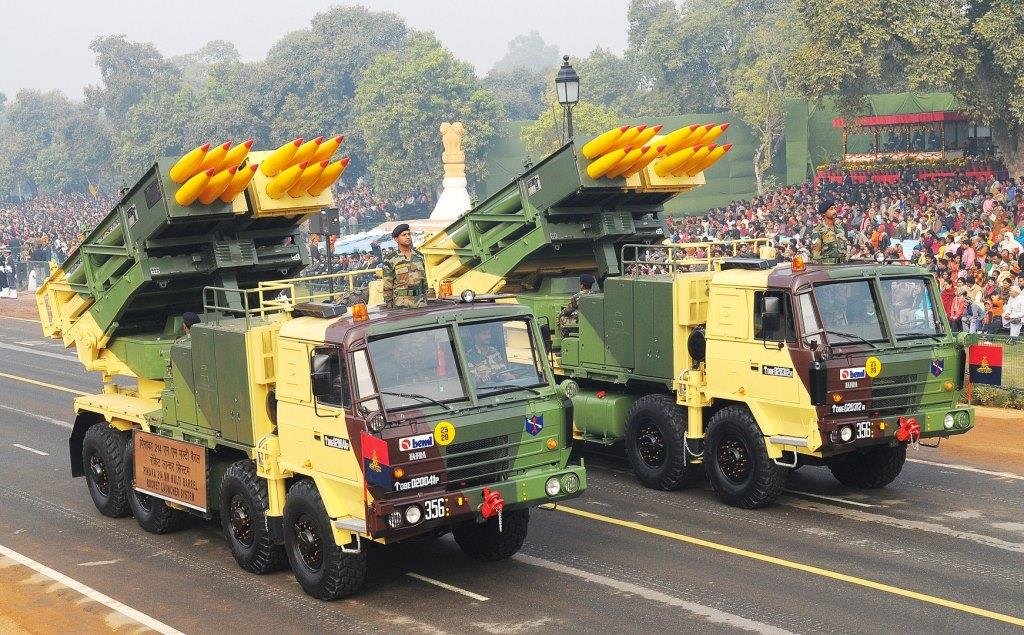
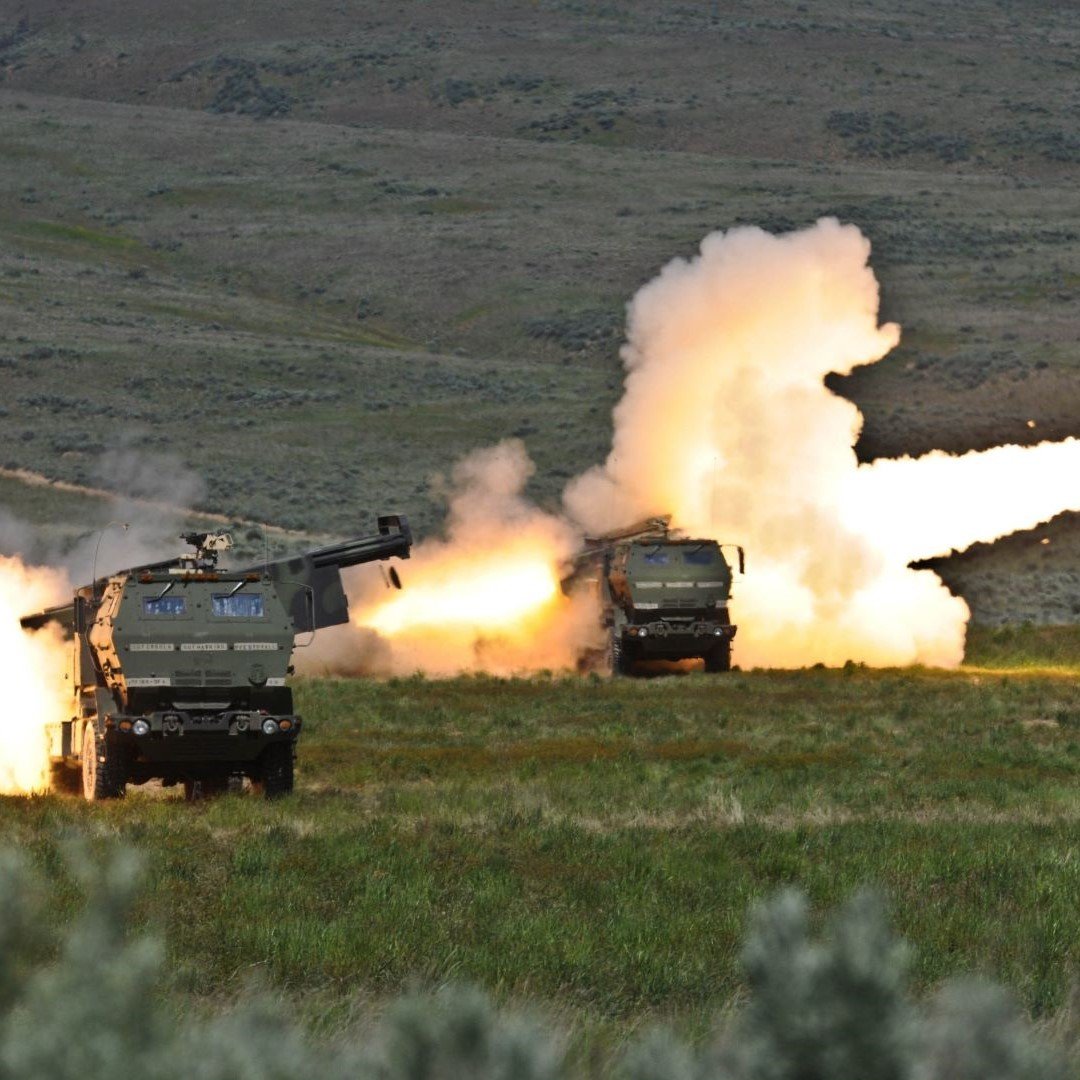
In conclusion,
Both Pinaka Multi Barrel Rocket Launcher (MBRL) and High Mobility Artillery Rocket System (HIMARS) have their strengths and weaknesses. While HIMARS has a longer range and better mobility, the Pinaka MBRL has a higher firing rate and is relatively cheaper. Ultimately, the choice between the two systems depends on the specific requirements of the military and the resources available.
Difference Between Smerch and Pinaka
| Feature | Smerch | Pinaka MBRL |
| Origin | Russia | India |
| Range | 90-120 km | 75-120 km |
| Warhead | High-explosive (HE), fragmentation, thermobaric | HE, fragmentation, incendiary |
| Mobility | Truck-mounted | Truck-mounted |
| Firing Rate | 3 rockets in 20 seconds | 12 rockets in 44 seconds (Pinaka Mk-I), 12 rockets in 40 seconds (Pinaka Mk-II), 12 rockets in 45 seconds (Pinaka Mk-III) |
| Crew | 3-4 | 3-4 |
| Guided | Yes | Yes (Pinaka Mk-II and Mk-III) |
| Accuracy | High | High |


Top 10 Multi Barrel Rocket Launchers in the World:
- Russian BM-30 Smerch – a 12-barrel system capable of firing various types of rockets up to a range of 120 km.
- Chinese Type 90A and Type 90B – 30-tube and 40-tube systems respectively, with ranges of up to 150 km and 400 km respectively.
- Indian Pinaka MBRL – a 12-barrel system that can fire rockets up to a range of 120 km.
- US M270 MLRS – a 12-tube system that can fire rockets up to a range of 300 km.
- South Korean Chunmoo K136 – a 36-tube system with a range of up to 160 km.
- Israeli Lynx MLRS – a 13-tube system capable of firing guided and unguided rockets up to a range of 300 km.
- Turkish T-300 Kasirga – a 12-tube system that can fire rockets up to a range of 120 km.
- Czech RM-70 – a 40-tube system capable of firing rockets up to a range of 20 km.
- Iranian Fajr-5 MBRL – a 5-tube system capable of firing rockets up to a range of 75 km.
- Belarusian Polonez – an 8×8 truck-mounted system with a range of up to 300 km.
Read More Missile Blogs:- The Topol-M ICBM: Russia’s Powerful Nuclear Deterrent and BM 27 Uragan MRL.

